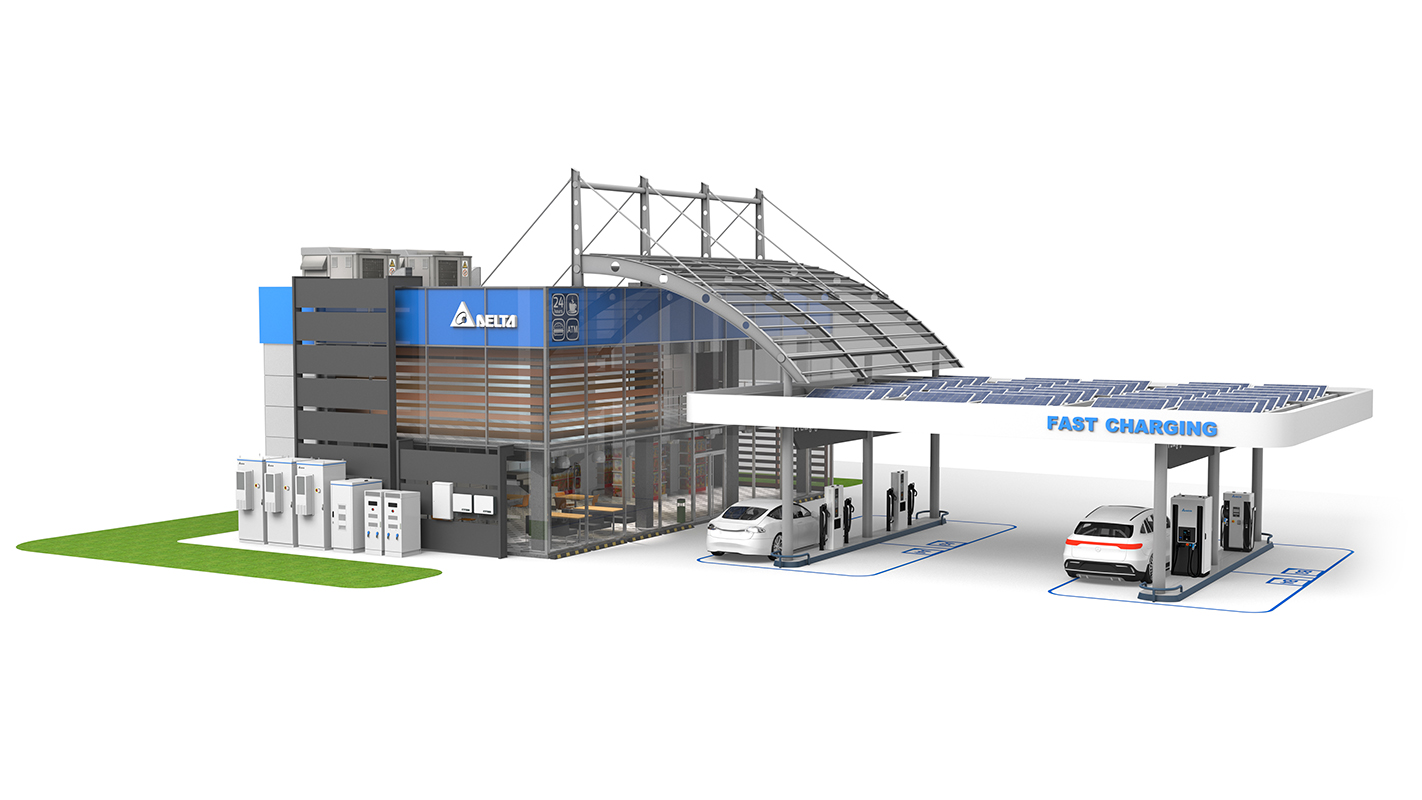From motor racing to road trips, pit stops to refuel are a familiar part of any journey by car, whether petrol or electric. But, despite steady improvement in the driving range of EVs, many would-be purchasers fear being stranded when the power runs out.
The European Union expects there to be 44 million EVs on its roads by 2030. But existing charging infrastructure needs to be significantly expanded to cope with so many electric vehicles and alleviate consumer concerns. It’s a tough challenge, as many service stations lack a strong enough grid connection to scale their charging capacity.
The charging challenge
Perceptions about charging infrastructure — or a lack of it — are a major barrier to mass adoption of EVs: a study by energy provider Shell, claimed to be the biggest ever undertaken among European EV drivers, found that more than half of participants are concerned about insufficient charging infrastructure.
In its analysis of the study, Shell said that to facilitate mass EV adoption the industry must understand the challenges of EV drivers, so drivers feel they have access to sufficient charge points with a convenient, seamless and reliable charging experience.
In March 2023, EY forecasted that 55% of car sales will be EVs by 2040, but tempered its optimism by adding: “An accessible and equitable charging infrastructure is critical for electric vehicles to take off in the mass market”. The consultancy also estimates that, by 2040, 140 million chargers will be needed.
Even where there is a strong charging infrastructure, such as in EV pioneering nations like Norway, charging queues form at times when people are setting off for annual holidays, says Eero Pehkonen, Field Application Engineer at Delta.
The grid challenge
Adding more and higher-powered chargers to existing service station forecourts could allay these fears and accelerate EV take up. But it’s not that simple. To deliver fast-charging infrastructure, service stations will need high-powered grid connections and, for many, that’s a tall order.
McKinsey research says that a highway rest stop simultaneously servicing 20 trucks and 10 cars with fast chargers could experience peak electricity demand of about 20 megawatts — equivalent to that of a town or city with 20,000 inhabitants, for example.
And in more remote parts of Europe, it may not be possible in the medium term to improve grid connectivity to a level where service stations can provide fast charging for multiple vehicles.
“Grid connections are often the bottlenecks. It all depends on how much capacity is available,” says Pehkonen.

Delayed connection
Even where the wider infrastructure network permits a viable grid connection, actually obtaining that connection can take time.
In order to connect renewable energy sites and provide strong connections for services like EV charging, the current size of global power grids will need to double, according to Bloomberg. At the same time, the transition to renewable power sources can create peaks and troughs in performance, making the grid less stable and, therefore, less reliable.
It takes more than a year on average to get a connection to a low-voltage electricity transmission line in Europe or the US, and most of this time is taken up with planning and granting permission.
Where there is an existing grid connection, it may not be strong enough. One option is to “oversize” transformers and other connection components, but this still may not be enough to overcome grid connection limitations.
“If you want to provide maximum power to a large number of outlets at the same time, then you have to consider how to design the electrical connection,” explains Pehkonen. “The traditional way is to oversize the transformers and other components in the electrical connection in order to offer maximum power all the time. But by using energy storage you can reduce the connection capacity to the grid and, for those peak hours when demand is higher, you can provide the max capacity using energy storage.”
“In the short term, energy storage is one way to make the grid connection faster to provide a better service to users. But with generation going more towards renewables, energy storage can be a way to improve grid stability.”
Eero Pehkonen, Field Application Engineer at Delta
The storage solution
Which is why power engineers are turning to energy storage solutions. Put simply, batteries can be charged when demand is low and then used to supplement energy from the grid to deliver high-power charging on demand.
Installing photovoltaic cells, an energy management system, together with battery storage solutions, will enable EV charging capacity in more remote areas to reach similar levels to today’s better-connected regions. That storage comes into its own at peak demand times, such as when people are on their way home from work and want to charge their cars.
“In the short term, energy storage is one way to make the grid connection faster to provide a better service to users. But with generation going more towards renewables, energy storage can be a way to improve grid stability,” according to Pehkonen.
As well as being a short-term solution, providing the ability to smooth out fluctuations in grid output and boost charging capacity, lithium-ion batteries offer the potential of an extra revenue stream derived from selling power back to the grid.
The EU’s new alternative fuel infrastructure regulations envisage a future where heavy EVs like trucks will contribute power from their batteries when parked overnight. Energy storage is therefore not just a stopgap solution to deal with weaknesses in energy grids — it will be an integral part of a future sustainable energy market.
We don’t live in an ideal world with a strong power grid in all places. That’s why energy storage has an important role to play in delivering fast charging solutions — by supplementing what the grid can deliver and even bringing rapid EV charging to areas which today struggle to provide enough power. And, by participating in energy markets, service stations will find themselves helping to keep the lights on all over Europe.



